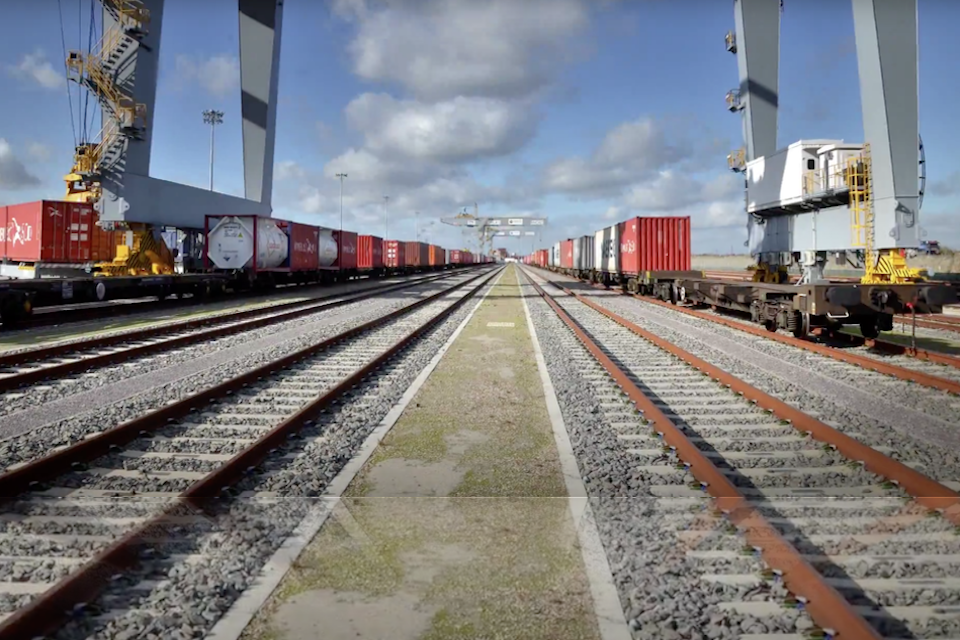UK safety watchdog releases striking images of London derailment

The Rail Accident Investigation Branch (RAIB) as released striking images of the derailment at London Gateway on 24 December. The accident, which damaged almost 600 metres of track and points, was widely reported locally. The incident will be one of the major investigations on the desk of the incoming chief inspector of the Rail Accident Investigation Branch, Andrew Hall, who steps up from his deputy role.
In the early morning of 24 December, the GB RailFreight-operated freight service from Hams Hall near Birmingham to London Gateway derailed on the down [eastbound] Thames Haven line while on the approach to London Gateway port, near to Stanford-le-Hope in Essex. The accident brought widespread disruption to freight and passenger services in parts of Essex.
The train
The freight train involved was formed of a class 66 locomotive and 33 intermodal wagons. The initial derailment occurred on Network Rail managed infrastructure, says the RAIB. “The leading bogie of the 12th wagon derailed on plain line at about 13 mph (20 kph)”, says their initial report. “The train continued travelling for around 500 metres after this initial derailment, before it reached a set of facing points within the port boundary, when a further four wagons derailed.”
The wagon involved in the initial derailment was the middle wagon of an Ecofret2 set. This consisted of three wagons semi-permanently connected to each other by steel draw bars. The investigators noted that wagon involved in the initial derailment was the only one in the train not loaded with a container.

There were no injuries caused by the derailment, but extensive damage was caused to track and signalling equipment inside the port boundary. The rail connection to the port remained closed until temporary repairs allowed it to reopen on 4 January 2022.
Independent findings awaited
As is usual practice, the RAIB say their investigation will seek to identify the sequence of events which led to the accident. “It will include consideration of the status of the track conditions, the loading of the wagons, wagon characteristics, the way in which the train was driven and any underlying management factors”, they note.
“Our investigation is independent of any investigation by the railway industry or by the industry’s regulator, the Office of Rail and Road”, said the Branch. “We will publish our findings, including any recommendations to improve safety, at the conclusion of our investigation. This report will be available on our website.”
You just read one of our premium articles free of charge
Want full access? Take advantage of our exclusive offer




